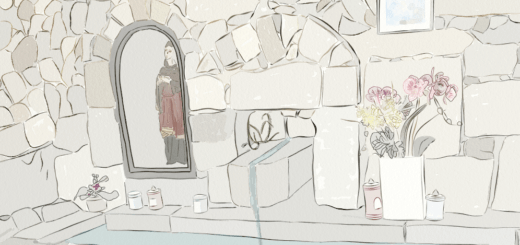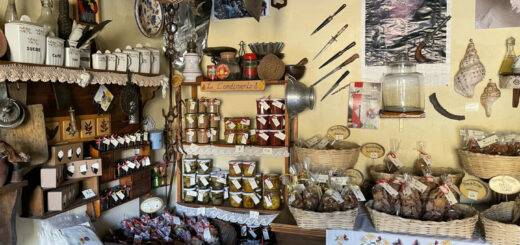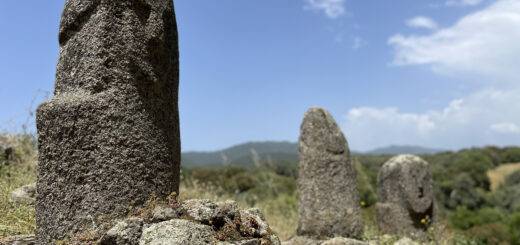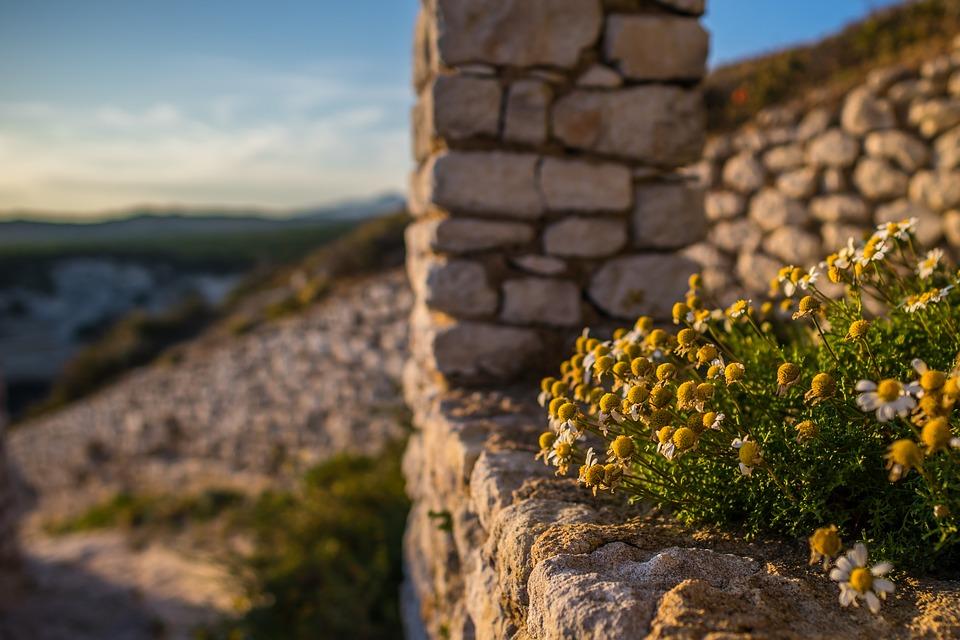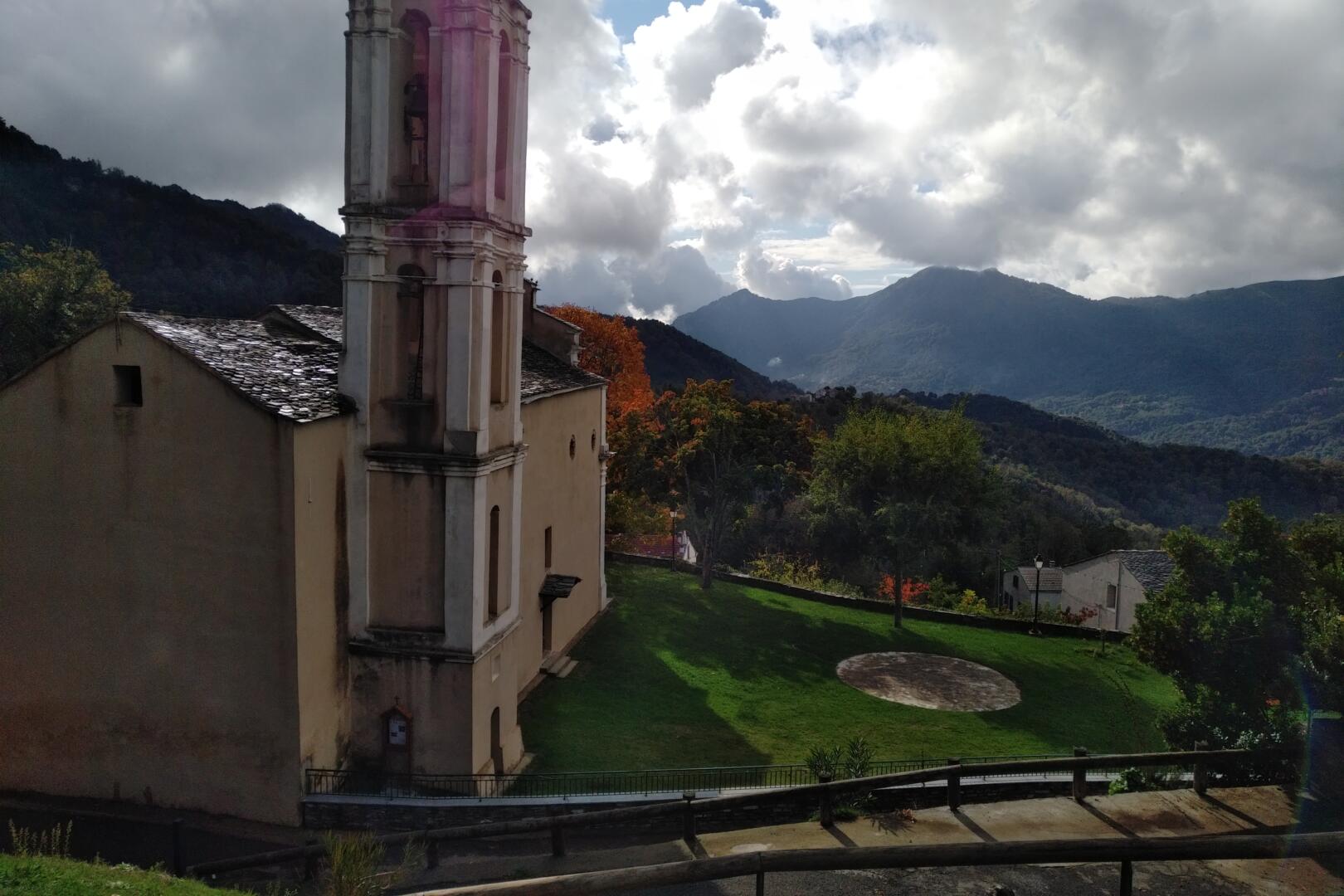Slow tourism in Corsica #2: a day trip to Cervione and the Campoloro
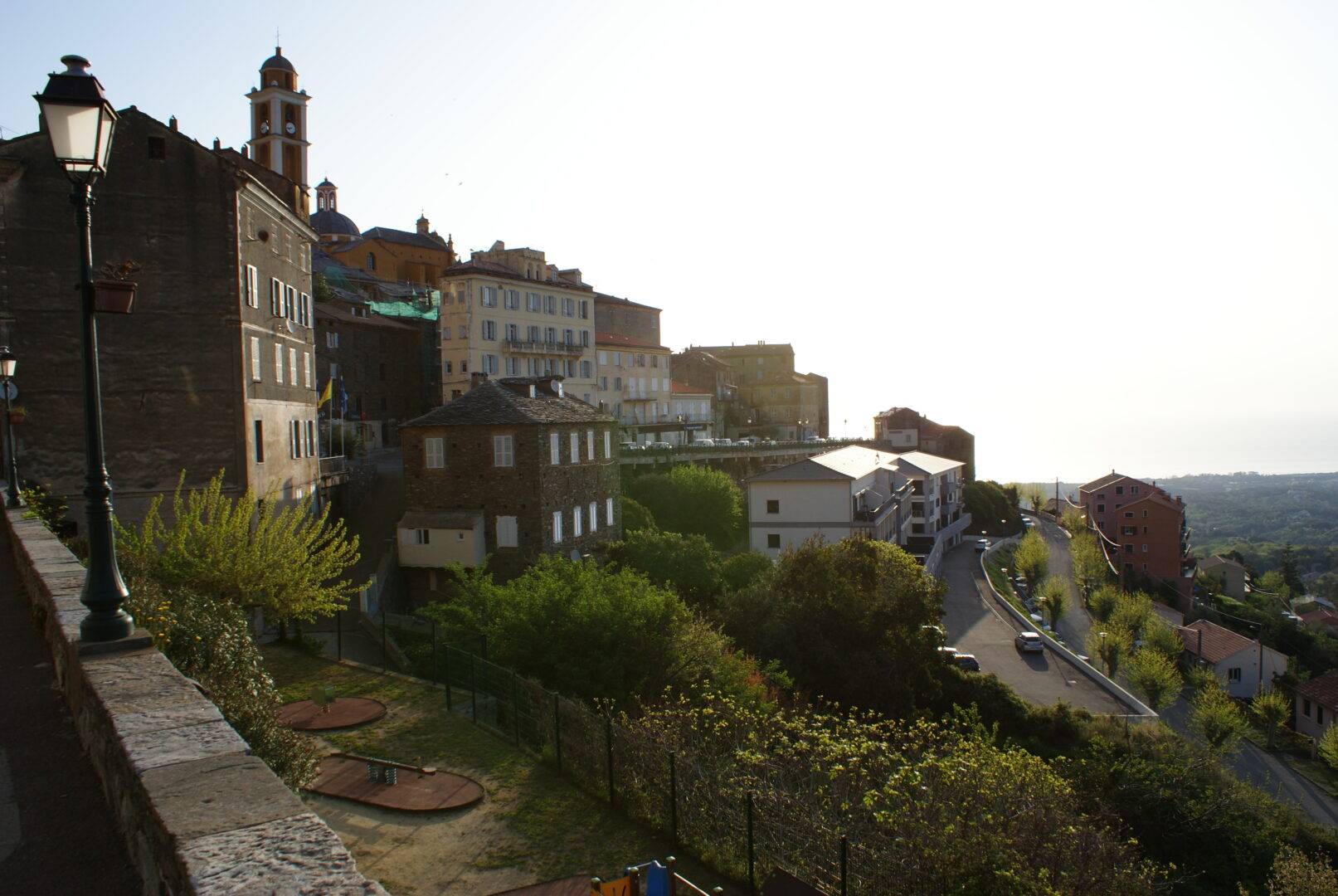
Let’s go today to the eastern part of the island, to the microregion of Campoloro with its iconic village of Cervione. A little piece of land, a balcony on the Tyrrhenian Sea that illustrates on a few square kilometers the eclecticism of the island’s culture. History, nature, agriculture, and more simply the art of good living mingle into a whole to be discovered…in small steps of course!
The day trip we present here is almost entirely doable, depending on your physical condition, on foot or by bike. However, even if you choose the car the kilometers are few. Also, note that the proposed tapes are not necessarily to be followed in order. Everything can be mixed or reversed.
The Chapel of Saint Christina
In every discovery invitation, there is a chapter dedicated to the “hidden jewel.”In our opinion, the St. Christina Chapel can be considered as such. That building dates back to the 15th century. It is located in a secluded place, between the port of Taverna and the villages of Cervione and Valle di Campoloro. However, it can be reached quickly, either from those villages or from the main road. And at both starting points you can get there on foot, following a clean, signposted path.
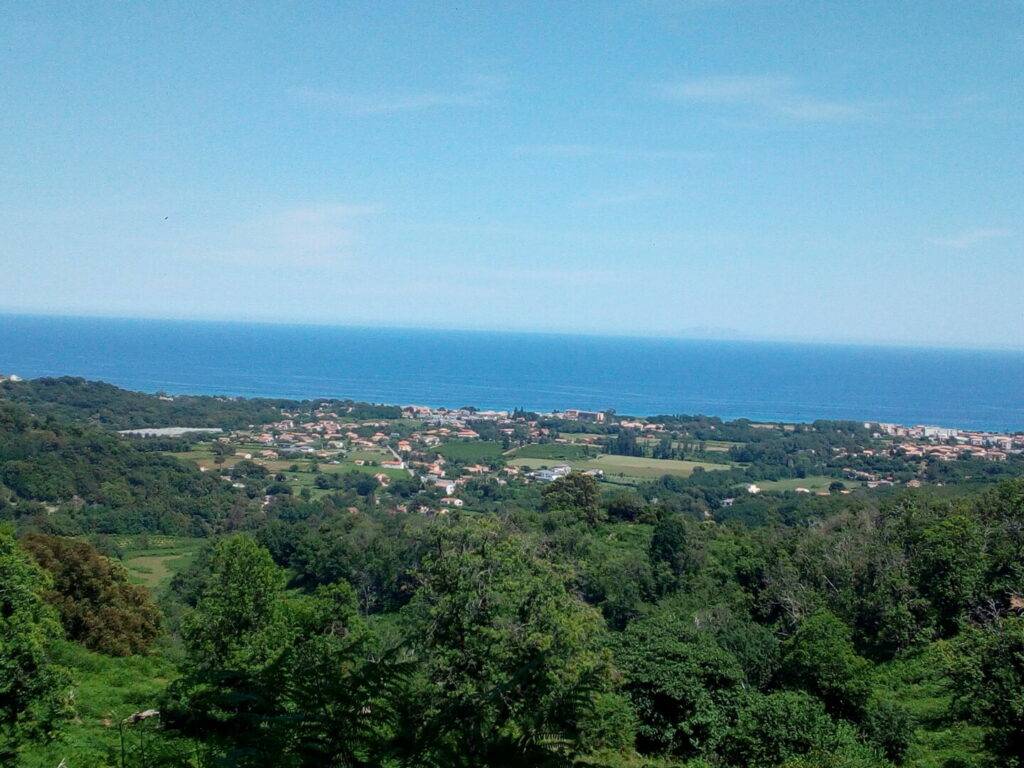
The small chapel of Santa Cristina is worthwhile for two reasons. The first is the exterior view of the building, simple and striking at the same time. The Chapel lies in a quiet, relaxing place. But the discovery is especially worthwhile for the chapel’s beautiful frescoes, surprising for a relatively modest building. The chapel is not open every day. But can be visited in two manners: by asking for keys at the Costa Verde Tourism Office (Moriani). Or by calling the association dedicated to the Santa Cristina Chapel, which offers the possibility of an appointment for a tour (contact information available here).
A walk to the Scupiccia
Dominating Cervione and Campoloro, the “Scupiccia” is one of the most striking places in the area. To reach the church at 750 meters of altitude, you have two choices. You can start from the village of Cervione. Simply follow an unmissable track for a few minutes then take the trail that meanders over about 450 meters of positive elevation gain. It takes a little less than an hour to get there.
The other option requires going all the way to the next village, Sant’Andria di Cotone, and climbing up to the little part of the village called “U Cigliu.” From Cervione, this village can be reached in less than ten minutes by car. Maybe half an hour by bike. From there, the walk to the Scupiccia is shorter and the elevation gain is less brutal.
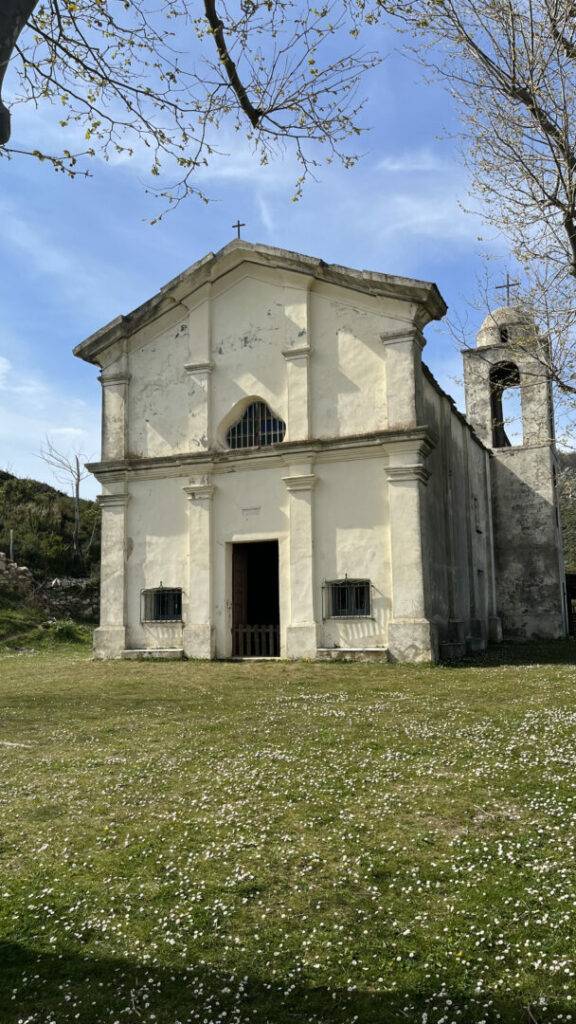
The Scupiccia is a place to discover for the view it offers, for the relaxing aspect of the place. It should be visited especially for its chapel that encloses the statue of the “Madona di a Scupiccia”. It is said that that statue, carved in Carrara marble by Florentine artists, was destined for the basilic of Cordoba (Spain). The ship carrying the statue was possibly sunk toward the marina of Prunete, where the inhabitants discovered it and dedicated a fervor that is still vibrant today.
Cervione, the Saint Erasmus Church, and the Museum
We have already had the opportunity to talk about Cervione, and it is no accident. Cervione is a special village because of its size compared to others in the area. Also, because of its local life so specific, and because of its history. There is a singular atmosphere in Cervione that you will not find elsewhere.
It is simply a beautiful village. For its old “carughji” (which means “small streets” in Corsican. The origin of the word is Genoese, “caruggi”), the “Traversa,” the view of the islands of Elba and Montecristo, and the Saint Erasmus church. That is one of the must-see Baroque-style churches in Corsica. Classified as a Historic Monument, it was the seat of the Diocese of Aleria from 1578 to 1801. This importance is reflected in the beauty of the building.
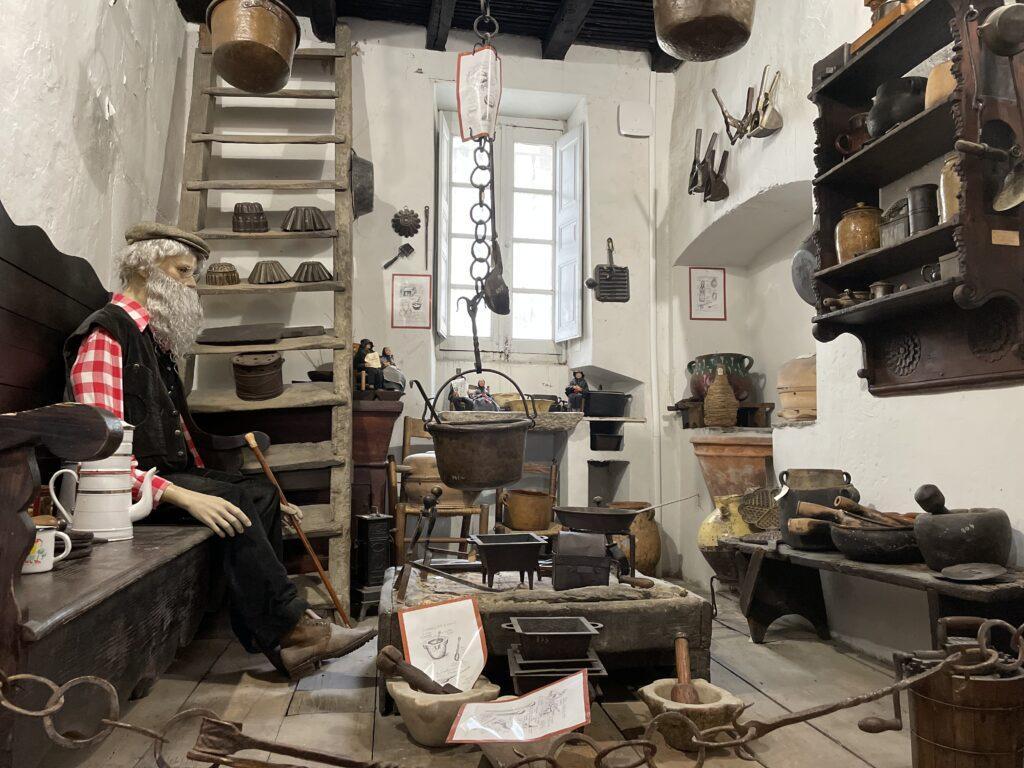
Cervione is a concentration of Corsican culture that is fully expressed with the Anton Dumenicu Monte Museum. Located in the cloister of the church, it offers us about 500m² of the “Corsica that used to be”. We talked about it in a dedicated article that we invite you to read here.
The famous hazelnut of Cervione
A day of discovery without something good to taste is not a successful day. For lunch, you will find some restaurants in Cervione that are old family businesses. You have to go to the center of the village, where the view may not be worthy but where the food is prepared with sincerity. We recommend the restaurant “U Casone” (next to the Pescetti Middle School), as well as “Aux Trois Fourchettes” (just below St. Erasmus Church).
However, whether you choose to have lunch at the restaurant or are looking for a little something to taste at any time, you should definitely try a sweet treat with hazelnuts. The hazelnut is the soul of the region. For those who have been to Corsica before, I am 99% sure that at least once a waiter has presented a hazelnut dessert claiming (rightly or wrongly) that the fruit came specifically from Cervione. If you have the opportunity, we recommend making a stop at “L’Atelier de la Noisette” in San Giuliano, in the locality of “Fiorentina”. You’ll find there dozens of products confectioned with the local hazelnut.
Having a drink at the marina of Taverna
Let’s end this day with simplicity. If you are looking for a place to take advantage of a justly deserved drink, there is Taverna Marina. The place itself is as pleasant as small marinas like this are, though perhaps a bit too crowded during the peak of the season. That said, observing the sky getting darker while sitting in front of the Tyrrhenian Sea is worth some discomfort.
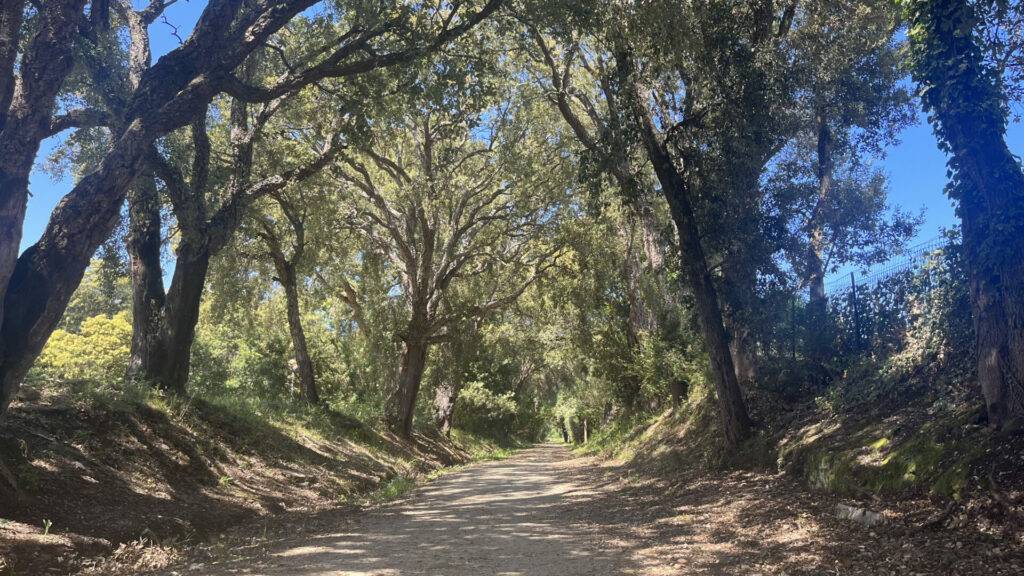
But we also chose that place because it can be reached on foot or by bike. Either from Moriani in the north or from Prunete (Cervione’s marina) in the south, on the promenade called “Spassiverde.” It was created a few years ago on the old railroad track where, before World War II, the train used to go from Bastia to Porto-Vecchio. It is a very quiet promenade (despite the noise of the nearby road that can still be heard), perfect for easy access to the port.

